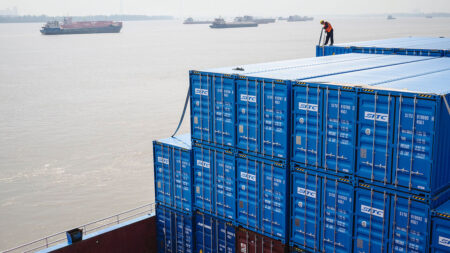The trade war initiated by the Trump administration in 2018 dramatically shifted the landscape of global markets, sending shockwaves across various asset classes. The gravity of these tariff announcements, particularly those instituted by President Donald Trump, was heralded in a surprising manner, provoking deep concern among financial sectors. On April 3rd, the day after the President articulated a new set of tariffs aimed at China, the Russell 3000 index — a benchmark representing a vast swath of the American stock market — plummeted by 5%. This sudden dip illustrated an immediate reaction from investors, reflecting both shock and anxiety about future economic prospects.
The developing narrative continued to worsen on April 4th when the Chinese government retaliated by imposing a 34% tariff on American goods. This measure further exacerbated market volatility, causing the Russell 3000 to descend another 6%. The unwelcome combination of the U.S. tariffs and China’s countermeasures painted a turbulent picture, prompting a flurry of speculation surrounding potential long-term economic impacts both domestically and internationally.
In the immediate aftermath of these developments, the implications for various asset classes became increasingly apparent. Investors’ sentiments revealed a troubling expectation of a pronounced economic deceleration. This pervasive anxiety permeated through different sectors, with stocks tied to exports particularly vulnerable amid escalating tensions between the two largest economies in the world. The fear of reduced demand from an important trading partner contributed to a lack of confidence that spread across market segments, affecting even industries not directly impacted by tariffs.
As the trade war progressed, it not only influenced the stock market but also began to reshape investment strategies, adjust growth estimates, and shift currency valuations. Businesses started weighing the costs against their revenue models, often resulting in delayed investment in both personnel and infrastructure. International corporations found themselves embroiled in complex logistical challenges, reconsidering their supply chains and market positions, which, in turn, affected employment figures and economic indicators.
Furthermore, the escalating tariffs prompted broader discussions about globalization and protectionism. Various analysts projected a slowdown in global trade growth, as nations recalibrated their economic strategies in response to heightened barriers. Countries reliant on export-led growth began to assess the risks associated with their dependencies on the now-volatile U.S.-China trading relationship. In the void created by this uncertainty, alternative markets, such as those in Southeast Asia or Latin America, began to emerge as potential beneficiaries, encouraging diversification and bilateral agreements among a variety of nations seeking stability amid turmoil.
The broader implications of the tariff announcements also led to significant dialogues regarding monetary policy responses from the Federal Reserve. As economic indicators began to signal potential downturns, experts speculated whether the Fed would alter its course to loosen monetary policy in an effort to stimulate growth. Lowering interest rates or modifying asset purchase programs became central considerations at Federal Open Market Committee (FOMC) meetings throughout 2018 and into 2019.
In conclusion, the trade war’s unprecedented scale and nature caught many investors off guard and altered the economic landscape significantly. What began as tariff announcements evolved into a substantial shift in economic sentiment, affecting everything from stock prices to corporate growth strategies. The lasting effects of these disruptions prompted ongoing analysis about future economic policies, reaffirming the interconnectedness of modern economies and the potential fallout from unilateral measures taken by powerful nations like the United States and China. This clash not only shaped market dynamics but also fundamentally altered the way businesses approached international trade in an increasingly interconnected world.









